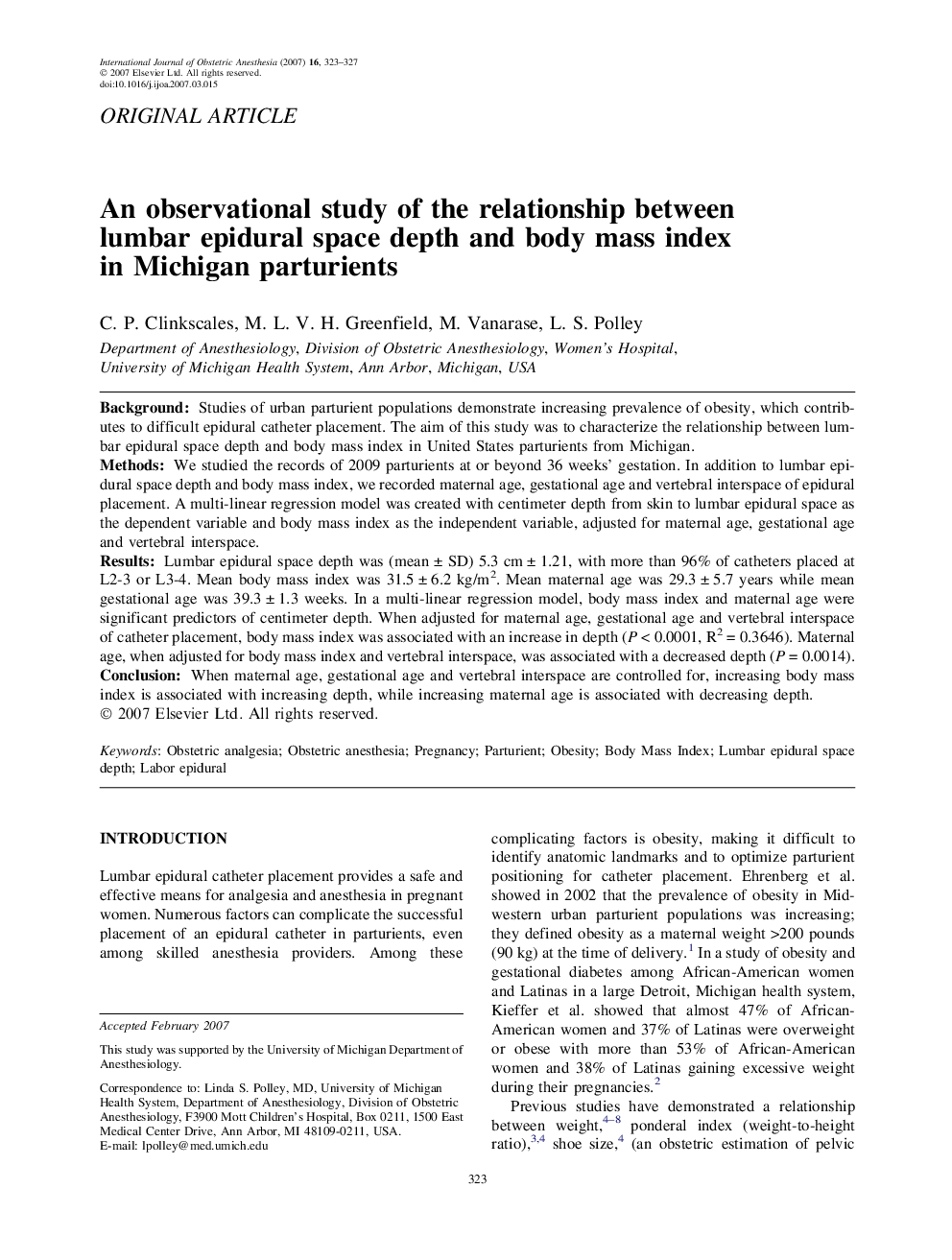| Article ID | Journal | Published Year | Pages | File Type |
|---|---|---|---|---|
| 2758555 | International Journal of Obstetric Anesthesia | 2007 | 5 Pages |
BackgroundStudies of urban parturient populations demonstrate increasing prevalence of obesity, which contributes to difficult epidural catheter placement. The aim of this study was to characterize the relationship between lumbar epidural space depth and body mass index in United States parturients from Michigan.MethodsWe studied the records of 2009 parturients at or beyond 36 weeks’ gestation. In addition to lumbar epidural space depth and body mass index, we recorded maternal age, gestational age and vertebral interspace of epidural placement. A multi-linear regression model was created with centimeter depth from skin to lumbar epidural space as the dependent variable and body mass index as the independent variable, adjusted for maternal age, gestational age and vertebral interspace.ResultsLumbar epidural space depth was (mean ± SD) 5.3 cm ± 1.21, with more than 96% of catheters placed at L2-3 or L3-4. Mean body mass index was 31.5 ± 6.2 kg/m2. Mean maternal age was 29.3 ± 5.7 years while mean gestational age was 39.3 ± 1.3 weeks. In a multi-linear regression model, body mass index and maternal age were significant predictors of centimeter depth. When adjusted for maternal age, gestational age and vertebral interspace of catheter placement, body mass index was associated with an increase in depth (P < 0.0001, R2 = 0.3646). Maternal age, when adjusted for body mass index and vertebral interspace, was associated with a decreased depth (P = 0.0014).ConclusionWhen maternal age, gestational age and vertebral interspace are controlled for, increasing body mass index is associated with increasing depth, while increasing maternal age is associated with decreasing depth.
